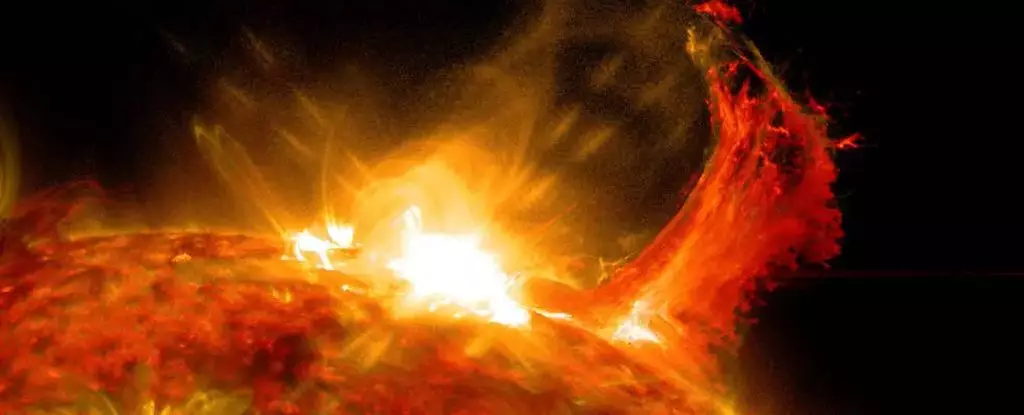To an untrained eye, the Sun appears to be an unwavering entity lighting our day and anchoring our solar system. However, beneath this façade lies a turbulent world of plasma—a seething soup of electrically charged gases in a relentless dance driven by complex magnetic forces. This unpredictability presents significant challenges for contemporary solar physicists, particularly when it comes to forecasting activities that could impact life on Earth. Among these phenomena, coronal mass ejections (CMEs) are of paramount importance due to their potential for disruption.
CMEs are colossal bursts of solar material propelled from the Sun’s corona, often triggered by sudden realignments in magnetic field lines. These events can release energy on a massive scale, with plasma traveling at astonishing speeds, sometimes crossing the vast gulf to Earth within just days if they are oriented toward our planet. Once CMEs arrive, they can interact with the Earth’s magnetosphere, potentially instigating geomagnetic storms that disrupt our essential technologies, including satellite communications and power infrastructure. Furthermore, these solar storms can culminate in breathtaking displays of auroras, enchanting observers with their ethereal beauty.
The Role of Artificial Intelligence in Predicting Solar Events
Traditionally, predicting when and how these solar events might strike has proven to be arduous for astronomers. However, a recent study led by a team of researchers from the University of Genoa, under the guidance of Sabrina Guastavino, has showcased a groundbreaking application of artificial intelligence (AI) in tackling this problem. By training machine learning algorithms on extensive historical data related to solar activity, the researchers sought to enhance our forecasting capabilities, particularly concerning a notable solar storm that occurred in May 2024.
The study utilized AI to process vast amounts of data collected over decades, aiming to decipher complex patterns indicative of increased solar activity, particularly targeting the active region labeled AR13664. The algorithms proved to be adept at identifying subtle signals that traditional methods might overlook. This novel approach yielded predictions associated with significant solar flares, including an X8.7 class flare that accompanied the May storm.
Exciting Results and Their Implications
The findings from Guastavino’s team are promising. Their machine learning techniques demonstrated an unprecedented level of accuracy in forecasting solar flares, CME production, and subsequent geomagnetic storms. One of the most pivotal revelations was the significant reduction of uncertainties compared to conventional forecasting methods. This advancement is particularly critical, given the potential consequences of solar storms on modern infrastructure.
The implications of accurate solar predictions extend beyond mere academic interest. For instance, a more reliable forecast of CME arrivals could lead to proactive measures to safeguard critical systems from outages, thereby mitigating the risk of disruptions to global communications, navigation systems, and electricity grids. Additionally, for enthusiasts of celestial phenomena, AI-driven models could enhance the predictability of auroral displays, enriching the experience for sky watchers.
As the study heralds a new dawn in solar research, it raises exciting questions about the future trajectory of this field. The fusion of AI with astrophysics may offer tools capable of unraveling the mysteries of solar dynamics, potentially leading to more robust safeguarding measures against the unpredictable behaviors of the Sun. While the challenges of solar prediction remain, the integration of machine learning could accelerate our understanding and foster resilience in the face of cosmic uncertainties.
The application of AI in predicting solar activity represents a transformative leap forward, turning the spotlight on a realm that was once believed to be inscrutable. As we continue to advance our capabilities in harnessing technology, the once-mysterious behaviors of our Sun may become clearer, offering both scientific insights and practical applications for humans on Earth. The Sun may still teem with uncertainty, but with the aid of innovative technologies, we stand a greater chance of anticipating its temperamental outbursts.

